 Search by Keyword
|
“ALL I’VE GOT TO DO”
(John Lennon – Paul McCartney)
With all of the creative songwriting output from the Lennon / McCartney team in 1963, as well as the magnitude of their incredibly busy schedule during the beginnings of their catapult to fame, it is only to be expected that a song or two might not receive the attention it rightfully deserved, even if that song is a masterpiece. This is truly the case with the beautifully written “All I’ve Got To Do.”
 It sadly appears that the average Beatles fan of today hasn’t heard of this song. It rarely if ever gets any exposure. It has never appeared on any compilation or "greatest hits" package. It’s almost never featured in any Beatles tribute band set list. Even The Beatles themselves viewed it with little regard. In their entire career, this song was only in their focus for one day; the day that it was recorded. After that day, "All I've Got To Do" was quite possibly never thought about again. Even in interviews about their songwriting throughout the rest of their lives, both Lennon and McCartney barely mention a word about the song. It sadly appears that the average Beatles fan of today hasn’t heard of this song. It rarely if ever gets any exposure. It has never appeared on any compilation or "greatest hits" package. It’s almost never featured in any Beatles tribute band set list. Even The Beatles themselves viewed it with little regard. In their entire career, this song was only in their focus for one day; the day that it was recorded. After that day, "All I've Got To Do" was quite possibly never thought about again. Even in interviews about their songwriting throughout the rest of their lives, both Lennon and McCartney barely mention a word about the song.
 All this being the case, there is an understandable aura of mystery surrounding this song, especially so because of its undeniable likeability. Once introduced to the song, it’s hard for the listener to dismiss as just a filler track for this album. This track has a classy appeal that suggests that it could have attracted much more attention than it did. With the detailed analysis provided here, undoubtedly the most information you'll ever find written about "All I've Got To Do," it is surely hoped that a much greater appreciation of this song will be achieved. As the opinions of most Beatlemaniacs suggest, this is truly deserved. All this being the case, there is an understandable aura of mystery surrounding this song, especially so because of its undeniable likeability. Once introduced to the song, it’s hard for the listener to dismiss as just a filler track for this album. This track has a classy appeal that suggests that it could have attracted much more attention than it did. With the detailed analysis provided here, undoubtedly the most information you'll ever find written about "All I've Got To Do," it is surely hoped that a much greater appreciation of this song will be achieved. As the opinions of most Beatlemaniacs suggest, this is truly deserved.
Songwriting History
 The only indication made in print as to the time "All I've Got To Do" was written is given by Steve Turner in "A Hard Day's Write," suggesting sometime in the year 1961. While this very well could be the case, what is known is that The Beatles never performed the song live throughout their career, whether in their formative years at The Cavern or in Hamburg, nor after their fame solidified from 1963 onward. The only indication made in print as to the time "All I've Got To Do" was written is given by Steve Turner in "A Hard Day's Write," suggesting sometime in the year 1961. While this very well could be the case, what is known is that The Beatles never performed the song live throughout their career, whether in their formative years at The Cavern or in Hamburg, nor after their fame solidified from 1963 onward.
On the surface, this fact makes the 1961 claim seem unlikely, since the claim cannot be substantiated from any other source as of this writing. An undeniable fact is that The Beatles had the habit of utilizing every original composition in their live sets throughout the early years.
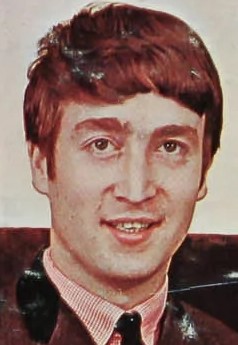 But, to play devil’s advocate, we must consider that, since it has been well established that this is a 100% Lennon composition, he could have held this song close to his chest throughout those formative years and only pulled it out when a new composition was sorely needed for inclusion on their second British album "With The Beatles." But, to play devil’s advocate, we must consider that, since it has been well established that this is a 100% Lennon composition, he could have held this song close to his chest throughout those formative years and only pulled it out when a new composition was sorely needed for inclusion on their second British album "With The Beatles."
 Either way, what is known is that Paul, George and Ringo were entirely unaware of the existence of this song on the day that they were introduced to it in the studio when it was recorded. Author Barry Miles, in his McCartney biography "Many Years From Now," states that "All I've Got To Do" was "showed to Paul only in the studio just before recording." This studio procedure of introducing a new song on the day of a recording session was totally new to The Beatles up to this point, although it became much more of a standard practice as time went on. The pressure of finishing a second album before the end of the year 1963 may have appeared as a daunting task, which may have instigated the desperate act of Lennon purging his memory to reveal this gem. Similar desperate acts happened in later years for the same reason, such as with the beautiful “Michelle” for the Rubber Soul album at the end of 1965. Either way, what is known is that Paul, George and Ringo were entirely unaware of the existence of this song on the day that they were introduced to it in the studio when it was recorded. Author Barry Miles, in his McCartney biography "Many Years From Now," states that "All I've Got To Do" was "showed to Paul only in the studio just before recording." This studio procedure of introducing a new song on the day of a recording session was totally new to The Beatles up to this point, although it became much more of a standard practice as time went on. The pressure of finishing a second album before the end of the year 1963 may have appeared as a daunting task, which may have instigated the desperate act of Lennon purging his memory to reveal this gem. Similar desperate acts happened in later years for the same reason, such as with the beautiful “Michelle” for the Rubber Soul album at the end of 1965.
 Another help in determining the time of writing is to examine the influences of inspiration for the song. A rare quote from Lennon concerning the song, as related in David Sheff's book "All We Are Saying," reveals that it was his attempt at “trying to do Smokey Robinson again.” His infatuation with the music of The Miracles is evident on this second British album “With The Beatles.” Much of Lennon’s songwriting style on the album has been admittedly inspired by Smokey Robinson, not to mention the group's excellent cover of his recent US 1963 top ten hit “You’ve Really Got A Hold On Me.” Especially noteworthy in “All I’ve Got To Do,” though, is the influence of The Miracles’ 1959 song “You Can Depend On Me,” with its lyrical similarity and its introductory suspended fourth chord. Another help in determining the time of writing is to examine the influences of inspiration for the song. A rare quote from Lennon concerning the song, as related in David Sheff's book "All We Are Saying," reveals that it was his attempt at “trying to do Smokey Robinson again.” His infatuation with the music of The Miracles is evident on this second British album “With The Beatles.” Much of Lennon’s songwriting style on the album has been admittedly inspired by Smokey Robinson, not to mention the group's excellent cover of his recent US 1963 top ten hit “You’ve Really Got A Hold On Me.” Especially noteworthy in “All I’ve Got To Do,” though, is the influence of The Miracles’ 1959 song “You Can Depend On Me,” with its lyrical similarity and its introductory suspended fourth chord.
 Being highly influenced by his musical heroes at this point, traces of other influences can also be detected in this Lennon original. The soulful songwriting of Arthur Alexander, John’s professed favorite singer of the time, can easily be detected throughout the chord structure, melody line, singing style and detailed arrangement. It has also been suggested that Lennon's obsession with the early '60s "girl groups," most notably The Shirelles 1962 hit "Baby It’s You," which they covered on their first album, can be heard, as well as early songs by The Drifters. Being highly influenced by his musical heroes at this point, traces of other influences can also be detected in this Lennon original. The soulful songwriting of Arthur Alexander, John’s professed favorite singer of the time, can easily be detected throughout the chord structure, melody line, singing style and detailed arrangement. It has also been suggested that Lennon's obsession with the early '60s "girl groups," most notably The Shirelles 1962 hit "Baby It’s You," which they covered on their first album, can be heard, as well as early songs by The Drifters.
 Since Arthur Alexander’s popularity and The Shirelles “Baby It’s You” both appeared in 1962, their influence may have been only in the singing style and arrangement of the song if “All I’ve Got To Do” was indeed completely written by 1961. Of course, this is left to guesswork but, nonetheless, helps us to paint a more detailed picture as to the songwriting history of the track. Since Arthur Alexander’s popularity and The Shirelles “Baby It’s You” both appeared in 1962, their influence may have been only in the singing style and arrangement of the song if “All I’ve Got To Do” was indeed completely written by 1961. Of course, this is left to guesswork but, nonetheless, helps us to paint a more detailed picture as to the songwriting history of the track.
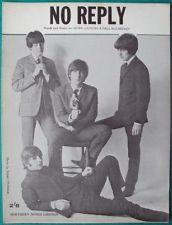 One final argument in favor of the song’s being written at a later date, such as September of 1963, is the fact that it was composed with American audiences in mind. The depiction of calling a girl on the phone was something that was common with US teenagers in the early '60s but not in Britain, so Lennon purposely put this in to appeal to the youth of America. For instance, regarding the song “No Reply” which also mentioned calling a girl on the phone, Lennon states "I had the image of walking down the street and seeing her silhouetted in the window and not answering the phone, although I have never called a girl in my life because phones weren’t part of the English child’s life." One final argument in favor of the song’s being written at a later date, such as September of 1963, is the fact that it was composed with American audiences in mind. The depiction of calling a girl on the phone was something that was common with US teenagers in the early '60s but not in Britain, so Lennon purposely put this in to appeal to the youth of America. For instance, regarding the song “No Reply” which also mentioned calling a girl on the phone, Lennon states "I had the image of walking down the street and seeing her silhouetted in the window and not answering the phone, although I have never called a girl in my life because phones weren’t part of the English child’s life."
 It should also be noted, however, that the Jerry Reed-written hit "That's All You Gotta Do" as recorded by Brenda Lee, which peaked at #6 on the American Billboard Hot 100 in 1960, has remarkably similar lyrics, right down to the plea for a boy to "call me on the telephone." Therefore this song is quite likely to have been an influence in writing "All I've Got To Do," if even only subliminally. It should also be noted, however, that the Jerry Reed-written hit "That's All You Gotta Do" as recorded by Brenda Lee, which peaked at #6 on the American Billboard Hot 100 in 1960, has remarkably similar lyrics, right down to the plea for a boy to "call me on the telephone." Therefore this song is quite likely to have been an influence in writing "All I've Got To Do," if even only subliminally.
 Keeping in mind that Brian Epstein had actually approached Lennon and McCartney in September of 1963 to encourage them to write songs with US audiences in mind, which led to “I Want To Hold Your Hand” being written in this month, it seems quite convincing to conclude that “All I’ve Got To Do” was also written at this time. The insertion of the word "yeah," a common American word that had been used to great effect in "She Loves You" as well as in two other songs written around this time, "It Won't Be Long" and "I Want To Hold Your Hand," also adds to the argument that it wasn't written until around September of 1963, although the word could have been inserted into the previously written "All I've Got To Do" when it was recorded. Nevertheless, it has to be admitted that, with memories hazy from the passing of time and the untimely death of John Lennon in 1980, there may always be a degree of uncertainty concerning when the song was actually written. Keeping in mind that Brian Epstein had actually approached Lennon and McCartney in September of 1963 to encourage them to write songs with US audiences in mind, which led to “I Want To Hold Your Hand” being written in this month, it seems quite convincing to conclude that “All I’ve Got To Do” was also written at this time. The insertion of the word "yeah," a common American word that had been used to great effect in "She Loves You" as well as in two other songs written around this time, "It Won't Be Long" and "I Want To Hold Your Hand," also adds to the argument that it wasn't written until around September of 1963, although the word could have been inserted into the previously written "All I've Got To Do" when it was recorded. Nevertheless, it has to be admitted that, with memories hazy from the passing of time and the untimely death of John Lennon in 1980, there may always be a degree of uncertainty concerning when the song was actually written.
Recording History
 Two recording sessions (July 18th and July 30th, 1963) had transpired, the result being that just over half of their second British album, "With The Beatles," was finished. About a month and a half later, on September 11th, 1963, The Beatles reconvened at EMI Studio Two to start work on the second half of the album. Since six of the eight previously recorded tracks for the new album were cover songs, the primary focus on this day was newly written original compositions. Five new songs were recorded this day, but only two of them were finished, “All I’ve Got To Do” being one of them. Two recording sessions (July 18th and July 30th, 1963) had transpired, the result being that just over half of their second British album, "With The Beatles," was finished. About a month and a half later, on September 11th, 1963, The Beatles reconvened at EMI Studio Two to start work on the second half of the album. Since six of the eight previously recorded tracks for the new album were cover songs, the primary focus on this day was newly written original compositions. Five new songs were recorded this day, but only two of them were finished, “All I’ve Got To Do” being one of them.
 The afternoon session on this day started at 2:30 pm, beginning with aborted attempts at two new songs, “I Wanna Be Your Man” and “Little Child.” After it was decided to leave both of these songs for another day, work started on “All I’ve Got To Do” at approximately 3:30 pm. The afternoon session on this day started at 2:30 pm, beginning with aborted attempts at two new songs, “I Wanna Be Your Man” and “Little Child.” After it was decided to leave both of these songs for another day, work started on “All I’ve Got To Do” at approximately 3:30 pm.
After Lennon introduced it for the first time to the other Beatles, they recorded fourteen live takes of the song. Eight of these takes were false starts, which is evidence in itself that the group was unfamiliar with the composition. "Take 14" was deemed the best, this being re-recorded from the original two-track tape onto another two-track machine in order for an unspecified overdub to be recorded simultaneously, this now becoming "take 15." This became the finished song as we know it, and The Beatles never played it again. That completed the afternoon recording session at 6 pm.
 While The Beatles were on vacation and out of the country, producer George Martin, with engineers Norman Smith and Geoff Emerick, created the mono mix of "All I've Got To Do" on September 30th, 1963. The same three staff members created the stereo mix on October 29th, with the engineering assistance of the mysterious B.T. Interestingly, when the tapes were given to Capitol Records in the US, they decided to create a mono "Type B" version of the song for the mono edition of the "Meet The Beatles!" album by combining both channels of the stereo mix into one instead of using the superior mono mix created on September 30th, 1963 by George Martin. While The Beatles were on vacation and out of the country, producer George Martin, with engineers Norman Smith and Geoff Emerick, created the mono mix of "All I've Got To Do" on September 30th, 1963. The same three staff members created the stereo mix on October 29th, with the engineering assistance of the mysterious B.T. Interestingly, when the tapes were given to Capitol Records in the US, they decided to create a mono "Type B" version of the song for the mono edition of the "Meet The Beatles!" album by combining both channels of the stereo mix into one instead of using the superior mono mix created on September 30th, 1963 by George Martin.
Song Structure and Style
 The song structure for “All I’ve Got To Do” is uniquely similar to the cover version of “A Taste Of Honey” that The Beatles did on their first album. The similarity lies in the use of a refrain instead of a bridge, the difference between the two being the finality a refrain provides which, while not necessarily repeating the title of the song in the lyrics, usually completes the framework of the song and returns you to the home key. The overall structure of the song, therefore, is 'verse/ verse/ refrain/ verse/ refrain' (or aabab). The structure of the song ends there, although The Beatles chose to return to a hummed final verse which fades away seconds after it begins. No solos of any kind are deemed necessary in order to complete the desired picture. The song structure for “All I’ve Got To Do” is uniquely similar to the cover version of “A Taste Of Honey” that The Beatles did on their first album. The similarity lies in the use of a refrain instead of a bridge, the difference between the two being the finality a refrain provides which, while not necessarily repeating the title of the song in the lyrics, usually completes the framework of the song and returns you to the home key. The overall structure of the song, therefore, is 'verse/ verse/ refrain/ verse/ refrain' (or aabab). The structure of the song ends there, although The Beatles chose to return to a hummed final verse which fades away seconds after it begins. No solos of any kind are deemed necessary in order to complete the desired picture.
 After the introductory suspended fourth chord fades out, an unusual eleven-measure verse then begins. The first six measures of this verse are in an exotic syncopated beat which appears as a refined version of the rhythm used in “Ask Me Why” from their first album. The first through sixth measures of the verse display Paul playing dual strings simultaneously on his bass following the pattern Ringo plays on his kick drum, this being quite innovative considering Paul had just been introduced to the song that day. This technique is arguably the first time in the history of rock music that a bass guitarist played multiple strings simultaneously on a rock 'n' roll song. The fifth and sixth of these measures also highlight McCartney’s usual adeptness at higher harmony when the song’s title is sung. The next four measures pick up the mood with a more steady rocking rhythm which works well as a backdrop to the lyrical solution to what is posed in the song’s title. After the introductory suspended fourth chord fades out, an unusual eleven-measure verse then begins. The first six measures of this verse are in an exotic syncopated beat which appears as a refined version of the rhythm used in “Ask Me Why” from their first album. The first through sixth measures of the verse display Paul playing dual strings simultaneously on his bass following the pattern Ringo plays on his kick drum, this being quite innovative considering Paul had just been introduced to the song that day. This technique is arguably the first time in the history of rock music that a bass guitarist played multiple strings simultaneously on a rock 'n' roll song. The fifth and sixth of these measures also highlight McCartney’s usual adeptness at higher harmony when the song’s title is sung. The next four measures pick up the mood with a more steady rocking rhythm which works well as a backdrop to the lyrical solution to what is posed in the song’s title.
 The final measure of the verse actually has a three part use. The first would be the standard "Beatles break" which has by now become a hallmark for their early catalog. The second use would be an actual return to the exotic syncopated drum beat which is an appropriate segue into another verse. The third use is as an actual beginning of the next verse, since the melody line of the verse begins before the first measure does. The final measure of the verse actually has a three part use. The first would be the standard "Beatles break" which has by now become a hallmark for their early catalog. The second use would be an actual return to the exotic syncopated drum beat which is an appropriate segue into another verse. The third use is as an actual beginning of the next verse, since the melody line of the verse begins before the first measure does.
The second verse is identical in structure apart from different lyrics and the absence of the "break" in the last measure. Instead of the break, we transcend into a rise in intensity leading to the nine measure refrain, which crescendos as the climax of the song, highlighted by Lennon’s dramatic lead vocals as well as convincing background vocals from Paul and George. This time, the ninth and final measure of the refrain becomes the "break" with a three part use which segues nicely into a third verse, which is actually a hybrid of the first and second verses lyrically, using the first half of the second verse with the second half of the first verse.
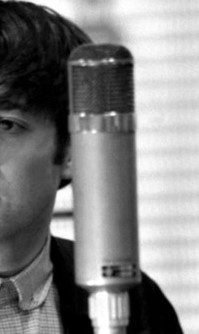 We then hear an identical repeat of the refrain with slightly different vocal accents from Lennon, which show how he, as its writer, truly had the song’s framework and vocal style well rehearsed in his mind before this day, although he was really the only one who was well rehearsed. This final refrain is actually extended to eleven measures because of the repeat of the last line “you just gotta call on me.” The final break of the refrain then naturally moves us into what appears to be another verse but, as previously stated, it has a hummed vocal line with full McCartney harmony humming as the song dissolves into a satisfying fade-out just before the final four steady rock rhythm measures were due to occur. We then hear an identical repeat of the refrain with slightly different vocal accents from Lennon, which show how he, as its writer, truly had the song’s framework and vocal style well rehearsed in his mind before this day, although he was really the only one who was well rehearsed. This final refrain is actually extended to eleven measures because of the repeat of the last line “you just gotta call on me.” The final break of the refrain then naturally moves us into what appears to be another verse but, as previously stated, it has a hummed vocal line with full McCartney harmony humming as the song dissolves into a satisfying fade-out just before the final four steady rock rhythm measures were due to occur.
 This final conclusion chosen for the song, unprecedented in review of the Beatles catalog up to this point, is indication of the creativity that was brewing in the minds of these young musicians that would evolve into the groundbreaking no-holds-barred songwriting and arrangements we would see as time progressed. Noteworthy too is the use of this ending to relate an emotional satisfaction of a comfortable romantic relationship. Nothing else needs to be said as the happy John Lennon rides off into the sunset. This final conclusion chosen for the song, unprecedented in review of the Beatles catalog up to this point, is indication of the creativity that was brewing in the minds of these young musicians that would evolve into the groundbreaking no-holds-barred songwriting and arrangements we would see as time progressed. Noteworthy too is the use of this ending to relate an emotional satisfaction of a comfortable romantic relationship. Nothing else needs to be said as the happy John Lennon rides off into the sunset.
 Although the simplified lyrics are somewhat clichéd and predictable, paired with this melody line, chord structure and vocal style, they come across as appropriate and convincing. Simply put, the message is very clear that the singer’s needs are met by his girl whenever they are requested and, to be fair, her needs are graciously met in return. The only catch is to ask, and that’s ‘all they’ve got to do.’ This exact sentiment is actually repeated less than a year later in John’s “Any Time At All,” probably owing more to a time crunch than to any real attraction to the story. The lyrics are somewhat more convincing the first time around as is usually the case. Although the simplified lyrics are somewhat clichéd and predictable, paired with this melody line, chord structure and vocal style, they come across as appropriate and convincing. Simply put, the message is very clear that the singer’s needs are met by his girl whenever they are requested and, to be fair, her needs are graciously met in return. The only catch is to ask, and that’s ‘all they’ve got to do.’ This exact sentiment is actually repeated less than a year later in John’s “Any Time At All,” probably owing more to a time crunch than to any real attraction to the story. The lyrics are somewhat more convincing the first time around as is usually the case.
 Noteworthy in John’s lyrics at the time is his obsession with the Americanism “yeah,” as used to great effect in “She Loves You.” The Beatles' focus on attracting the young American audience was very successful, “yeah, yeah, yeah” becoming their trademark throughout the next year. Unfortunately, the continuation of throwing in the meaningless word “yeah” at the end of a lyric line began to cheapen the music a little. As in this case, the line “and when I want to kiss you, yeah” for example, shows that Lennon may have needed to think outside of the box a little bit in order to keep things fresh. “Not A Second Time,” also recorded on this day, repeated the same gimmick, as well as the very beginning of “I Want To Hold Your Hand.” Fortunately, this marked the end of the “yeah” trend. Noteworthy in John’s lyrics at the time is his obsession with the Americanism “yeah,” as used to great effect in “She Loves You.” The Beatles' focus on attracting the young American audience was very successful, “yeah, yeah, yeah” becoming their trademark throughout the next year. Unfortunately, the continuation of throwing in the meaningless word “yeah” at the end of a lyric line began to cheapen the music a little. As in this case, the line “and when I want to kiss you, yeah” for example, shows that Lennon may have needed to think outside of the box a little bit in order to keep things fresh. “Not A Second Time,” also recorded on this day, repeated the same gimmick, as well as the very beginning of “I Want To Hold Your Hand.” Fortunately, this marked the end of the “yeah” trend.
 As to individual performances, John Lennon is truly the highlight, with the aforementioned emotive vocal style with a definite Smokey Robinson / Arthur Alexander inspiration. John’s latest fixation with double tracking his lead vocals was fortunately neglected in this case, which allows for an appropriate singular tone to go with the intimate lyrics. John’s rhythm guitar, although somewhat rudimentary, provides what was required to accentuate his amazing vocal delivery. As to individual performances, John Lennon is truly the highlight, with the aforementioned emotive vocal style with a definite Smokey Robinson / Arthur Alexander inspiration. John’s latest fixation with double tracking his lead vocals was fortunately neglected in this case, which allows for an appropriate singular tone to go with the intimate lyrics. John’s rhythm guitar, although somewhat rudimentary, provides what was required to accentuate his amazing vocal delivery.
 Paul next deserves attention for his craftsman-like harmony work falling right into place regardless of his never hearing the song before this day. In spite of his unfamiliarity with it, Paul also quickly, but masterfully, creates an innovative bass line, complete with double-stops during the subdued sections of the verses plucking on dual strings simultaneously, this performance working perfectly for the song without coming across as too busy. Paul next deserves attention for his craftsman-like harmony work falling right into place regardless of his never hearing the song before this day. In spite of his unfamiliarity with it, Paul also quickly, but masterfully, creates an innovative bass line, complete with double-stops during the subdued sections of the verses plucking on dual strings simultaneously, this performance working perfectly for the song without coming across as too busy.
 Harrison shines in musicianship, from his classy opening chord and throughout the entire song, with his damped guitar chords which create a downbeat atmosphere during the first part of the verses, and a jarring mood-swing during the refrains. His harmonic vocal touches, while not his strong suit, are noteworthy here for being ‘spot-on’ considering his unfamiliarity with the song. Harrison shines in musicianship, from his classy opening chord and throughout the entire song, with his damped guitar chords which create a downbeat atmosphere during the first part of the verses, and a jarring mood-swing during the refrains. His harmonic vocal touches, while not his strong suit, are noteworthy here for being ‘spot-on’ considering his unfamiliarity with the song.
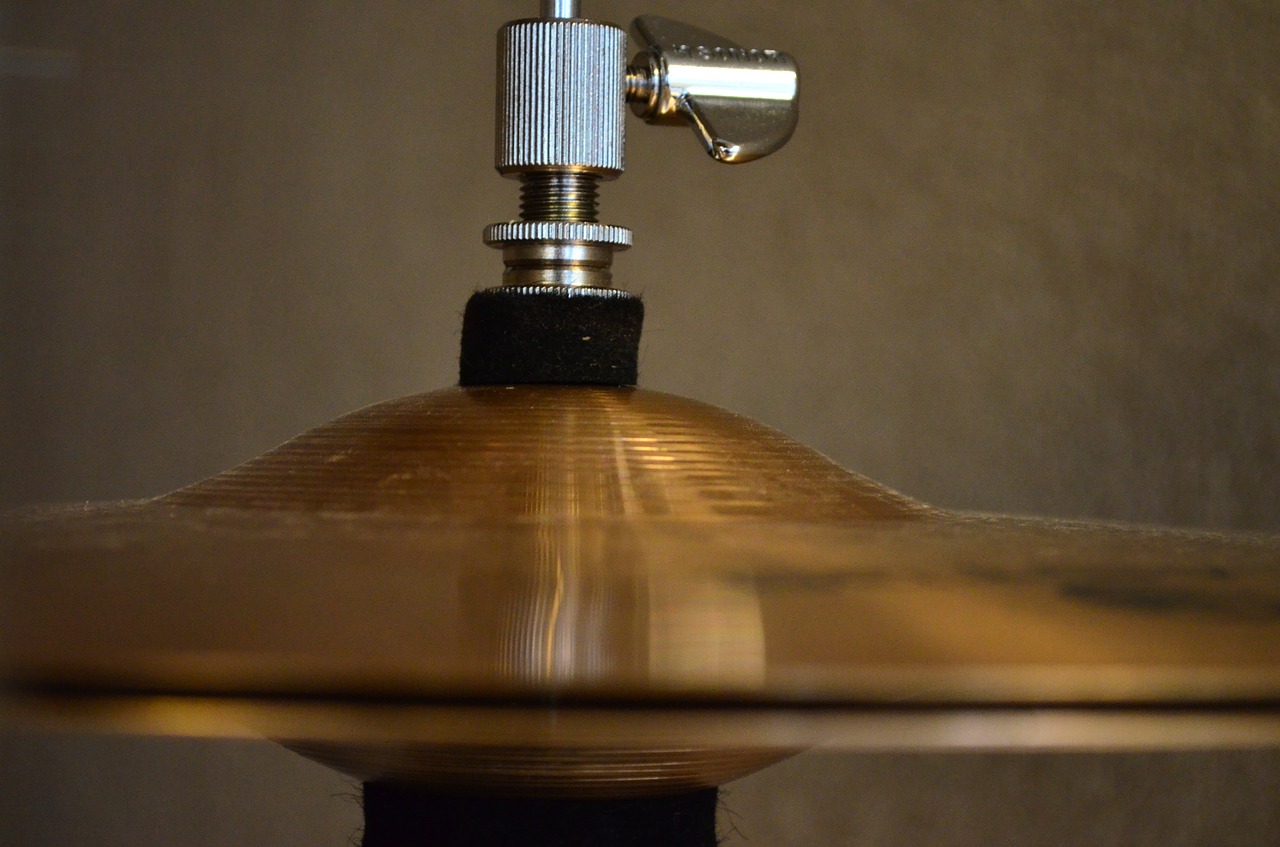 The return of the squeaky drum pedal from the first album is irritatingly evident but, nonetheless, the unmistakable charm and professionalism of Ringo’s performance on this song holds it all together. His sparse hi-hat strokes throughout the moody verses, in contrast to the pounding bass drum beats that introduce each refrain, show how quickly Starr could learn a song and rhythmically lead the group through an effortlessly tight performance. The return of the squeaky drum pedal from the first album is irritatingly evident but, nonetheless, the unmistakable charm and professionalism of Ringo’s performance on this song holds it all together. His sparse hi-hat strokes throughout the moody verses, in contrast to the pounding bass drum beats that introduce each refrain, show how quickly Starr could learn a song and rhythmically lead the group through an effortlessly tight performance.
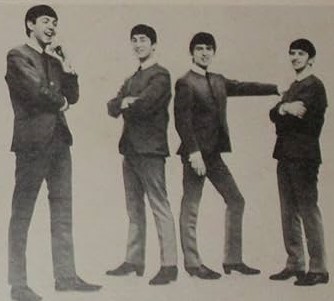 All in all, The Beatles played “All I’ve Got To Do” with the same charismatic diligence that they would have if this was their next single. Since "take 14" was the last time they ever played the song as a band, it says a lot about the determination The Beatles had to break into the American youth market and, in return, solidify their career. This inner motivation waned as time went on and was something the band sometimes struggled to recapture. Focusing on this strong early motivation helps us to enjoy the early Beatles albums as much as the highly acclaimed studio wizardry of their later years. All in all, The Beatles played “All I’ve Got To Do” with the same charismatic diligence that they would have if this was their next single. Since "take 14" was the last time they ever played the song as a band, it says a lot about the determination The Beatles had to break into the American youth market and, in return, solidify their career. This inner motivation waned as time went on and was something the band sometimes struggled to recapture. Focusing on this strong early motivation helps us to enjoy the early Beatles albums as much as the highly acclaimed studio wizardry of their later years.
 Capitol's "Meet The Beatles" album
|
American Releases
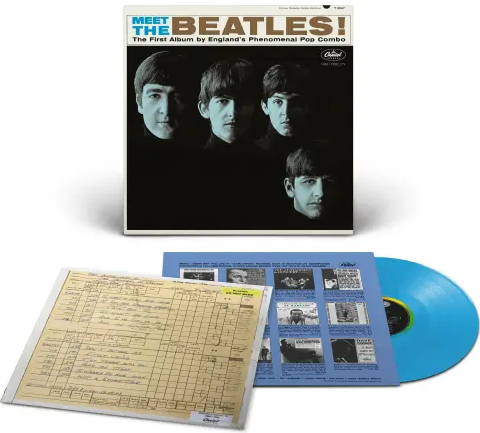 The first and only official American release of the song in the sixties was on January 20th, 1964 on the legendary Capitol album, “Meet The Beatles!” Its minimal exposure kept this song as a mostly forgotten but essential album track. Sandwiched between the dynamic “It Won’t Be Long” and the attention-getting “All My Loving,” "All I've Got To Do" unfortunately didn’t stand out. This album was finally released on an individual CD on January 21st, 2014, both the mono and stereo mixes being contained on a single disc. A mono edition of the album on opaque blue vinyl was then released on November 22nd, 2024 for sale exclusively at Target stores. The first and only official American release of the song in the sixties was on January 20th, 1964 on the legendary Capitol album, “Meet The Beatles!” Its minimal exposure kept this song as a mostly forgotten but essential album track. Sandwiched between the dynamic “It Won’t Be Long” and the attention-getting “All My Loving,” "All I've Got To Do" unfortunately didn’t stand out. This album was finally released on an individual CD on January 21st, 2014, both the mono and stereo mixes being contained on a single disc. A mono edition of the album on opaque blue vinyl was then released on November 22nd, 2024 for sale exclusively at Target stores.
 Also in January of 1964, Capitol issued the now rare compact 33 disc of “Meet The Beatles!” for jukeboxes only. Side two featured “All I’ve Got To Do” as the second of three songs, the hope being to help popularize the song in the neighborhood soda shops and "greasy spoons." Also in January of 1964, Capitol issued the now rare compact 33 disc of “Meet The Beatles!” for jukeboxes only. Side two featured “All I’ve Got To Do” as the second of three songs, the hope being to help popularize the song in the neighborhood soda shops and "greasy spoons."
Sometime in 1967, Capitol brought out Beatles music on a brand new but short-lived format called "Playtapes." These tape cartridges did not have the capability to include entire albums, so two truncated four-song versions of "Meet The Beatles" were released in this portable format, "All I've Got To Do" being on both of these releases. These "Playtapes" are highly collectable today.
 The first time that the British "With The Beatles" album became available in America was on the Mobile Fidelity Sound Lab's "Original Master Recording" vinyl edition released in January of 1987. This album included "All I've Got To Do" and was prepared utilizing half-speed mastering technology from the original master tape on loan from EMI. This title had a limited production, reportedly because of a damaged metal part that was needed for pressing the vinyl. Therefore, this album is said to be the rarest and most valuable Beatles album in the “Original Master Recording” series. The first time that the British "With The Beatles" album became available in America was on the Mobile Fidelity Sound Lab's "Original Master Recording" vinyl edition released in January of 1987. This album included "All I've Got To Do" and was prepared utilizing half-speed mastering technology from the original master tape on loan from EMI. This title had a limited production, reportedly because of a damaged metal part that was needed for pressing the vinyl. Therefore, this album is said to be the rarest and most valuable Beatles album in the “Original Master Recording” series.
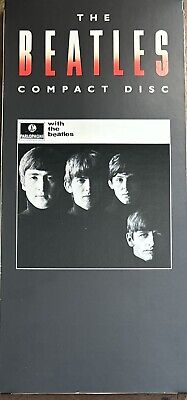 On February 26th, 1987 the British “With The Beatles” album was released in the US on compact disc, which contained "All I've Got To Do." A vinyl edition of this album was later released on July 21st, 1987. While these releases were in mono only, the remastered stereo CD version came out on September 9th, 2009, the remastered vinyl edition being released on November 13th, 2012. On February 26th, 1987 the British “With The Beatles” album was released in the US on compact disc, which contained "All I've Got To Do." A vinyl edition of this album was later released on July 21st, 1987. While these releases were in mono only, the remastered stereo CD version came out on September 9th, 2009, the remastered vinyl edition being released on November 13th, 2012.
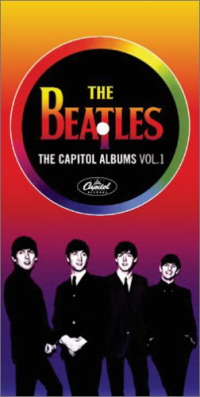 The November 26th, 2004 released box set titled “The Capitol Albums, Vol. 1” also contains the song in stereo and "Type B' foldover mono as featured on the original "Meet The Beatles!" album. The November 26th, 2004 released box set titled “The Capitol Albums, Vol. 1” also contains the song in stereo and "Type B' foldover mono as featured on the original "Meet The Beatles!" album.
The September 9th, 2009 released CD box set “The Beatles In Mono” also features the song, but in this case in a beautifully remastered mono mix that is worth its weight in gold. The vinyl edition first came out on September 9th, 2014.
 Capitol's "I Want To Hold Your Hand" single
|
Live Performances
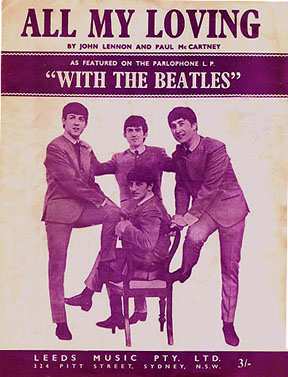 As stated earlier, the song was never performed again after the recording date at EMI and, because the song was written and introduced to the band just before recording, it had no opportunity for a performance life before it was recorded. The Beatles were much more interested in promoting their breakthrough single “I Want To Hold Your Hand,” which came out almost simultaneously with their second British album. As far as choosing album tracks to perform live, The Beatles chose to focus on some of their all-time favorite cover tunes, such as “Roll Over Beethoven,” the mature sounding “Till There Was You,” and the dynamic original composition “All My Loving.” As stated earlier, the song was never performed again after the recording date at EMI and, because the song was written and introduced to the band just before recording, it had no opportunity for a performance life before it was recorded. The Beatles were much more interested in promoting their breakthrough single “I Want To Hold Your Hand,” which came out almost simultaneously with their second British album. As far as choosing album tracks to perform live, The Beatles chose to focus on some of their all-time favorite cover tunes, such as “Roll Over Beethoven,” the mature sounding “Till There Was You,” and the dynamic original composition “All My Loving.”
Conclusion
 The immense Beatles catalog is full of tracks that are unheard of by the masses. It has been admitted by the songwriters that some of these are half-baked "work songs" that didn’t become known for good reason. It must be acknowledged that their dismissal of some of these works is part truth and part humility, being a little too hard on themselves. The immense Beatles catalog is full of tracks that are unheard of by the masses. It has been admitted by the songwriters that some of these are half-baked "work songs" that didn’t become known for good reason. It must be acknowledged that their dismissal of some of these works is part truth and part humility, being a little too hard on themselves.
The song “All I’ve Got To Do” is a stark example of the latter. This song can in no way be dismissed as a "work song" of no significance. It is the product of a genius who brilliantly condensed his favorite musical influences into a convincing arrangement strongly characteristic of its sources and yet uniquely expressed as his own. And, after quickly introducing it to a band who were hungry to make their mark in the music world, it wound up as a tightly rhythmic and impressive example of just what The Beatles were truly capable of.
Song Summary
"All I’ve Got To Do”
Written by: John Lennon / Paul McCartney
- Song Written: (most likely) September 1963
- Song Recorded: September 11, 1963
- First US Release Date: January 20, 1964
- First US Album Release: Capitol #ST-2047 “Meet The Beatles!”
- US Single Release: Capitol #SXA 2047 (Meet The Beatles Jukebox EP)
- Highest Chart Position: n/a
- British Album Release: Parlophone #PCS 3045 “With The Beatles”
- Length: 2:04
- Key: E major
- Producer: George Martin
- Engineers: Norman Smith, Richard Langham
Instrumentation (most likely):
- John Lennon – Lead Vocals, Rhythm Guitar (1962 Gibson J160E)
- Paul McCartney - Bass Guitar (1961 Hofner 500/1), Harmony Vocals
- George Harrison – Rhythm Guitar (1962 Gretsch 6122 Country Gentleman), Harmony Vocals
- Ringo Starr – Drums (1963 Ludwig Downbeat Black Oyster Pearl)
Written and compiled by David Rybaczewski
|
IF YOU WOULD LIKE TO MAKE A DONATION TO KEEP THIS WEBSITE UP AND RUNNING, PLEASE CLICK BELOW!
Sign Up Below for our MONTHLY BEATLES TRIVIA QUIZ!
|